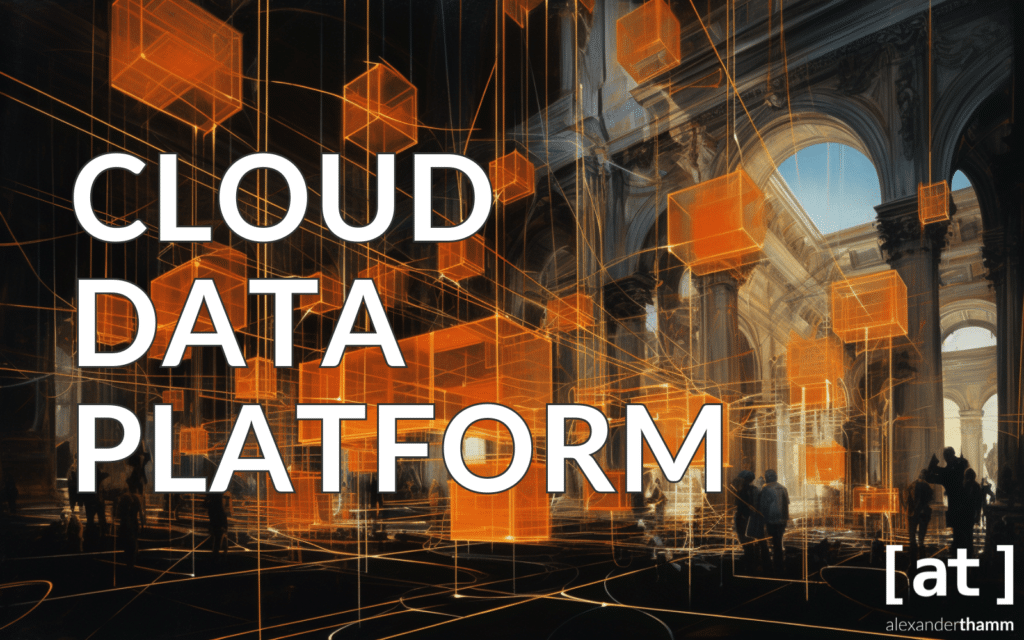In the context of the ongoing digitalisation of the business world, big data and cloud computing are playing an increasingly important role for companies that want to use their data effectively. The combination of these two technologies enables companies to process, analyse and use large volumes of data in the cloud in order to gain insights and generate business value. It is therefore of great importance that companies recognise the opportunities of data-driven decisions and use the advantages of big data in the cloud for decision-making.
Inhaltsverzeichnis
What characterises big data?
At Big Data is understood Large amounts of datathat cannot be effectively captured, stored, managed and analysed using conventional data processing techniques. This data is often complex, unstructured and available in different formats, which makes it difficult to process and analyse. Big data is characterised by the so-called "7Vs" which describe the properties of this category. These are "Volume", "Velocity", "Variety", "Variability", "Veracity", "Visualisation" and "Value". The difficulty often lies in processing the large volumes of data in real time, which come from many different sources.

Find out why big data continues to play a central role in data science projects despite the change in the hype cycle and how German companies are using it to boost their competitiveness.
How is big data processed in the cloud?
Processing big data in the cloud takes place through the use of Cloud infrastructure and cloud serviceswhich were specially developed for the purpose of processing large amounts of data. For example, companies can rely on Cloud platforms such as Amazon Web Services (AWS), Microsoft Azure, Google Cloud Platform (GCP) or T-Systems Dynamic Services for SAP Hana in order to utilise resources such as storage, computing power or databases as required. One of the main reasons for processing big data in the Cloud computing lies in the scalability of the cloud infrastructure.
Cloud platforms enable companies to optimise their Scale resources quickly and easilyto keep pace with the growing volume of data. This means that companies do not have to make large investments in hardware or operate their own data centres, but can instead use the resources of the cloud as required. This can also save on technical staff, as the cloud platform is responsible for maintaining the cloud infrastructure. In addition to infrastructure provision, the cloud also offers Solutions for processing big data. Companies only pay for the resources they actually use, which can lead to cost savings compared to building and operating their own data centres.
The cloud can also be a Faster time-to-market as companies react quickly to new requirements and are able to adapt their big data infrastructure accordingly. Companies use big data to gain insights from their data, identify patterns and trends and make predictions and well-founded decisions. Integrating big data into the cloud is worthwhile for companies that want to use their data effectively to gain a competitive edge and optimise business processes. The cloud can offer an ideal solution for processing big data, especially for companies with a high volume of data and complex data structures.

Immerse yourself in the world of cloud data platforms: Our latest blog post looks at how they are revolutionising data management and setting themselves apart from traditional cloud databases.
Advantages of big data in the cloud
The combination of big data and cloud computing offers companies the following advantages, among others:
- Scalability / FlexibilityCloud platforms enable companies to scale their big data infrastructure quickly and easily. This is intended to counteract the growing volume of data. By providing additional resources such as storage, computing power and database capacity, companies can avoid bottlenecks and ensure optimum performance. This enables them to react flexibly to seasonal peaks, unforeseen events or new business requirements without having to make long-term investments in hardware or infrastructure.
- Cost savingCloud services: By using cloud resources, companies only pay for the capacity they actually use. This can lead to cost savings compared to building and operating their own data centres. As cloud services are generally billed on a pay-per-use basis, companies can precisely control and optimise their expenditure. This means that the financial resources freed up within the company can be utilised in alternative ways.
- SpeedCloud platforms offer tools and services for quickly processing and analysing big data. By using cloud-based data processing services, companies are able to carry out complex analyses in real time and quickly gain insights from their data. This enables companies to react more quickly to changing market conditions and gain competitive advantages.
- Access to advanced technologiesCloud platforms provide access to a variety of advanced technologies and tools for processing and analysing big data, including machine learning, artificial intelligence and predictive analytics. By utilising these technologies, companies can implement advanced analytics processes to identify patterns and trends in their Data to identify risks, make predictions and take well-founded decisions. This allows business processes to be optimised, risks to be minimised and new business opportunities to be identified.

Cloud computing enables companies to use their IT resources more flexibly and cost-efficiently. The cloud architecture and infrastructure play a central role in this. Find out which aspects you need to pay attention to in our blog post:
Cloud Computing - Architecture & Infrastructure: Compactly explained
Entry hurdles for big data analyses in a cloud infrastructure
The development and operation of big data analyses in a cloud infrastructure can be associated with various entry hurdles for companies. One key aspect is the Personnel expenses for implementation and operation the big data infrastructure in the cloud. The migration of existing data and applications to the cloud requires specialised expertise in areas such as Cloud architecturedata integration and migration, and security. Although the cloud offers a flexible and scalable approach that allows companies to utilise their resources as required, the Costs for the use of cloud services increase rapidly. Especially when data volumes and the demand for computing power increase. Companies need to plan and budget carefully to ensure that they keep costs in check and achieve an efficient cost-benefit ratio.
Furthermore Data protection and security concerns This poses a particular challenge for companies that process sensitive data. The storage and processing of sensitive data in the Cloud often requires special security measures and adherence to data protection regulations and compliance requirements. Companies must ensure that their data is adequately protected in the cloud and that suitable security mechanisms are implemented. This is to prevent data loss, data breaches or unauthorised access.
Furthermore, the integration and maintenance of Big data analyses in a cloud infrastructure can be a complex task. Organisations need to ensure that their big data applications can be seamlessly integrated with other cloud services and applications to ensure smooth operations. This often requires collaboration with different teams and service providers as well as continuous monitoring and maintenance of the big data infrastructure. This identifies and resolves performance issues or outages.
Big data and cloud computing: growth potential for companies
The integration of big data into the cloud opens up many development opportunities and potential for companies to utilise their data effectively. By combining scalable cloud infrastructure, analysis tools and advanced technologies, companies can identify patterns and make predictions. This optimises business processes and generates competitive advantages. Despite some barriers to entry such as cost, data protection and skills shortages, the benefits of big data in the cloud often outweigh the risks and enable companies to drive their digital transformation and improve their business results.











0 Kommentare